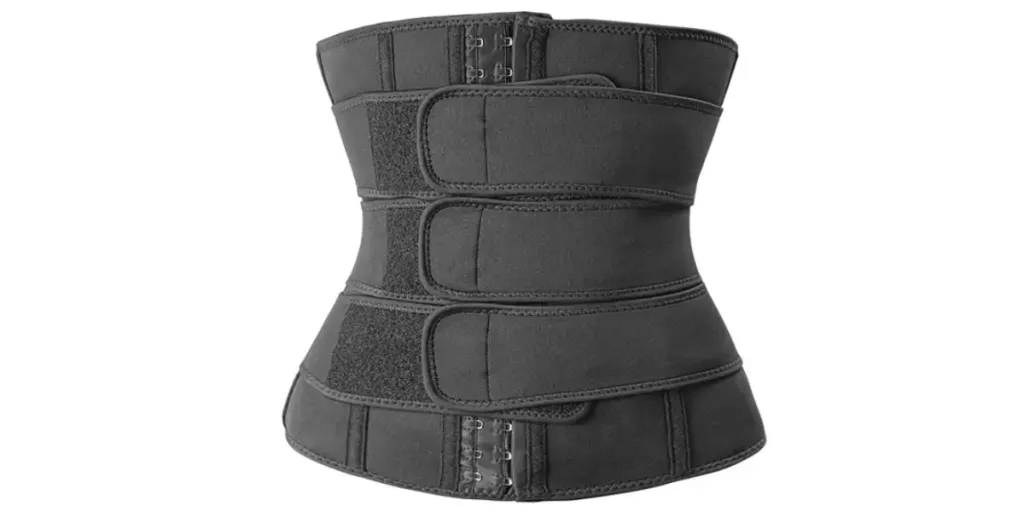In the dynamic world of outdoor gear, camping mats have emerged as a cornerstone product, evolving significantly in 2024. These mats, integral to outdoor experiences, offer users enhanced comfort and insulation from the ground, transforming the traditional camping experience into a more enjoyable and restful endeavor. With advancements in materials and design, modern camping mats cater to a variety of outdoor activities, ranging from lightweight options for backpackers to more luxurious choices for family camping. This evolution reflects a deeper understanding of diverse outdoor needs, ensuring that every adventure is supported by the right balance of comfort, durability, and practicality. As such, camping mats have become more than just a camping accessory; they are a pivotal element in defining the quality of outdoor adventures.
Table of Contents:
1. Varieties and applications of camping mats
2. 2024 camping mat market insights
3. Key considerations in camping mat selection
4. Leading camping mat models and their features
5. Conclusion
Varieties and applications of camping mats

The camping mat market in 2024 presents a diverse array of options, each tailored to specific outdoor activities. This variety ensures that every outdoor excursion is supported by the appropriate level of comfort and practicality.
Different types of camping mats
Foam mats
Foam mats, known for their simplicity and durability, remain a staple in the camping world. These mats are typically made from closed-cell foam, offering a basic level of comfort and excellent insulation. Their lightweight nature and robustness against wear and tear make them a reliable choice. Foam mats are particularly favored for their ability to withstand rough terrains and their ease of maintenance.
Self-inflating mats
Self-inflating mats represent a blend of comfort and convenience. These mats feature an open-cell foam insulation that expands and draws air in when the valve is opened, self-inflating to a degree. For full inflation, minimal effort is required. The combination of air and foam provides better cushioning than standard foam mats, making them a popular choice for those seeking a balance between comfort and portability.
Air-filled mats
At the higher end of the comfort spectrum are air-filled mats. These mats require manual or pump inflation but offer the most comfort, closely resembling a traditional mattress. Advanced models come with features like integrated pumps, adjustable firmness, and insulation for colder conditions. While they provide superior comfort, they are also more susceptible to punctures and require more care in handling.
Usage scenarios for each type

Backpacking
For backpackers, weight and pack size are critical. Foam mats, with their lightweight and compact design, are a practical choice. However, for those willing to carry a bit more weight for enhanced comfort, lightweight versions of self-inflating or air-filled mats are ideal. These mats provide better insulation and cushioning, essential for restorative sleep after a long day of hiking.
Car camping
Car camping allows for more flexibility in terms of weight and size. This scenario is where air-filled mats shine, offering the highest level of comfort akin to a home mattress. Their bulkier size is less of a concern when transportation is not limited by backpack size. Self-inflating mats also serve well in this context, providing a good balance between comfort and ease of use.
Family camping
Family camping often prioritizes comfort and convenience, especially when camping with children. In such scenarios, larger, more comfortable air-filled mats or double-sized self-inflating mats are preferable. These options ensure that all family members can enjoy a comfortable night’s sleep, which is crucial for an enjoyable camping experience.
In 2024, the camping mat market caters to a wide range of outdoor activities, with each type of mat designed to meet specific needs. From the rugged simplicity of foam mats to the plush comfort of air-filled options, the choice of mat significantly influences the overall camping experience. Understanding the specific requirements of each camping scenario is key to selecting the right mat, ensuring that each outdoor adventure is as comfortable as it is memorable.
2024 camping mat market insights

The 2024 camping mat market is characterized by a blend of innovative trends and shifting consumer preferences, reflecting the evolving landscape of outdoor activities.
Current market trends
The camping equipment market, which includes camping mats, is currently valued at USD 18.5 billion as of 2023. Experts project significant growth in this sector, anticipating it to reach USD 24.93 billion by 2028. This growth trajectory represents a compound annual growth rate (CAGR) of 6.15% from 2023 to 2028. This expansion reflects the increasing popularity of outdoor activities and the evolving demand for high-quality camping gear.
Innovations and technological advancements are at the forefront of the 2024 camping mat market. Manufacturers are increasingly focusing on materials that offer enhanced durability and environmental sustainability. There is a growing trend towards the use of eco-friendly materials, reducing the environmental impact of camping gear. Technological advancements have also led to the development of mats with improved insulation properties, catering to a broader range of climates and terrains. Additionally, the integration of smart technology in camping mats, such as built-in sensors to adjust firmness and temperature, is gaining traction, offering a more personalized camping experience.
The market is also seeing a rise in mats designed for specific activities, such as ultralight mats for thru-hikers and more robust, luxurious mats for car camping. This specialization aligns with the diverse needs of modern outdoor enthusiasts, ensuring that there is a suitable mat for every type of adventure.
Consumer preferences and demand analysis

Consumer preferences in the camping mat market have shown notable shifts. There is an increased demand for versatile camping mats that can serve multiple purposes, such as being suitable for both car camping and light backpacking. This reflects a preference for multifunctional and space-saving gear among consumers who engage in various outdoor activities.
Comfort remains a high priority, with consumers willing to invest in higher-quality mats that offer superior comfort and longevity. This trend is particularly evident among families and older campers, who prioritize comfort over weight and packability.
The demand for environmentally sustainable products is also on the rise, with consumers becoming more conscious of their environmental footprint. This has led to a preference for mats made from recycled materials or those that follow sustainable manufacturing processes.
In summary, the 2024 camping mat market is shaped by a combination of technological innovation, a focus on sustainability, and a deep understanding of the diverse needs of modern campers. These trends reflect a market that is not only adapting to the changing demands of outdoor enthusiasts but also leading the way in offering products that enhance the overall outdoor experience.
Key considerations in camping mat selection
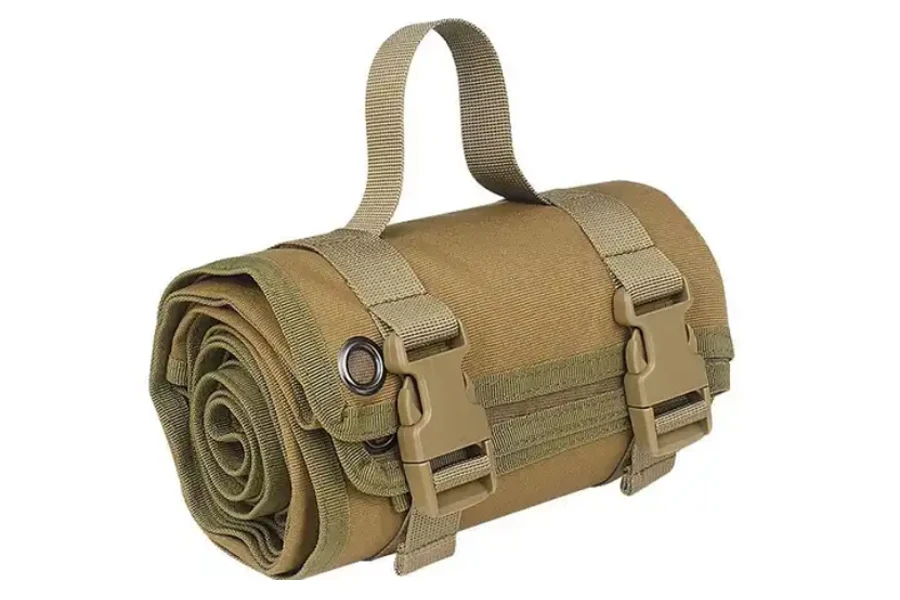
Selecting the right camping mat involves a nuanced understanding of various factors that contribute to the overall quality and suitability of the product. These considerations are crucial for ensuring that the selected mats meet the diverse needs of outdoor enthusiasts.
Material and durability
When selecting camping mats, the material’s quality directly impacts its durability and functionality. For instance, air pads, known for their comfort, often incorporate insulation and reflective materials to enhance warmth. These pads are designed with varying thicknesses, catering to different camping styles, from lightweight backpacking to luxurious glamping. However, their susceptibility to punctures is a concern, especially when used in rugged terrains or shared with pets. Field repairs are possible with appropriate patch kits, but the risk remains.
Self-inflating pads, combining open-cell foam insulation and air, offer a more durable option. They are less prone to damage compared to air pads and can be easily adjusted for firmness. These pads are generally more resilient, making them a suitable choice for varied outdoor conditions.
Closed-cell foam camping mats, the most basic and durable type, are made of dense foam filled with tiny closed air cells. They are known for their consistent insulation and are impervious to punctures or leaks. Their durability makes them ideal for harsh conditions and for use underneath other types of pads to enhance insulation and prevent damage.
Comfort and insulation
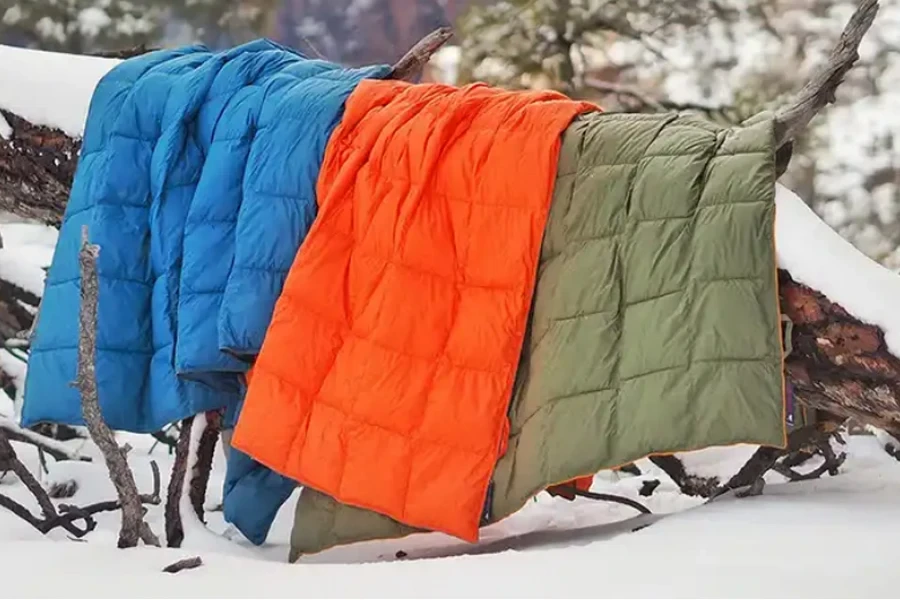
The comfort level of a camping mat is largely determined by its construction and the materials used. Air pads offer the highest level of comfort, mimicking the feel of a traditional mattress. They can be adjusted for firmness, allowing users to customize their sleeping experience. However, air pads may feel like they are losing air in fluctuating temperatures, requiring adjustments before sleep.
Self-inflating pads strike a balance between comfort and practicality. They provide good insulation and can be fine-tuned for firmness, but they are not as compact as air pads. Their construction allows for a comfortable sleep without the bulkiness of air pads.
The insulation capability of a camping mat is measured by its R-value, indicating its ability to resist heat loss. Higher R-values mean better insulation, essential for camping in colder environments. For instance, well-insulated air pads or self-inflating pads with high R-values are recommended for winter camping. The choice of a sleeping pad should align with the overall sleep system, including the sleeping bag and the camper’s clothing, to ensure optimal warmth and comfort.
In summary, the selection of camping mats based on material and durability involves considering the balance between comfort, insulation, and the practical aspects of camping. Whether it’s the lightweight durability of closed-cell foam mats, the comfort of air pads, or the balanced features of self-inflating pads, each type offers distinct advantages to cater to different camping needs and preferences.
Size and portability
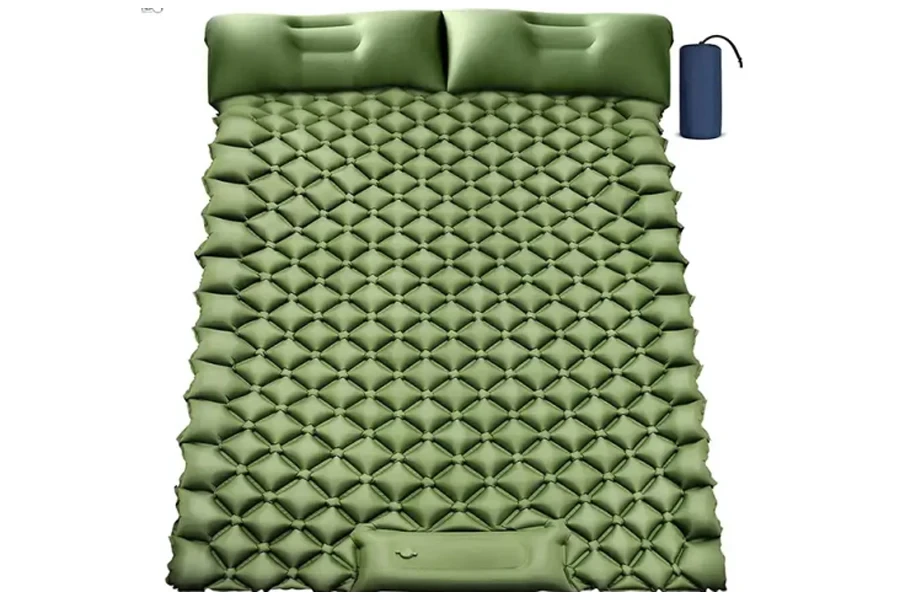
The size and portability of camping mats are crucial factors, especially for activities like backpacking where space and weight are limited. Camping mats typically come in two sizes: single and double. Single mats are designed for individual use, offering a compact and lightweight option, while double mats are spacious enough for two people, ideal for couples or family camping.
For backpackers, ultralight inflatable mats are a popular choice. These mats, when deflated, are small enough to fit inside a backpack, making them highly portable. Some single ultralight mats can be inflated in under 60 seconds using no more than 15 breaths, while others feature built-in foot pumps for easy inflation. However, it’s important to note that while these mats are incredibly light and compact, they may not offer the same level of insulation as other types.
For car camping or less mobile camping styles, self-inflating mats and thicker foam mats are suitable. These mats provide more cushioning and comfort but are bulkier and heavier. For instance, a thick foam camping mat, made from closed-cell EVA foam and measuring 15mm thick, offers a flat, level surface even on uneven ground. Its bulkier size is less of a concern for car camping but provides extra support and comfort.
Environmental impact
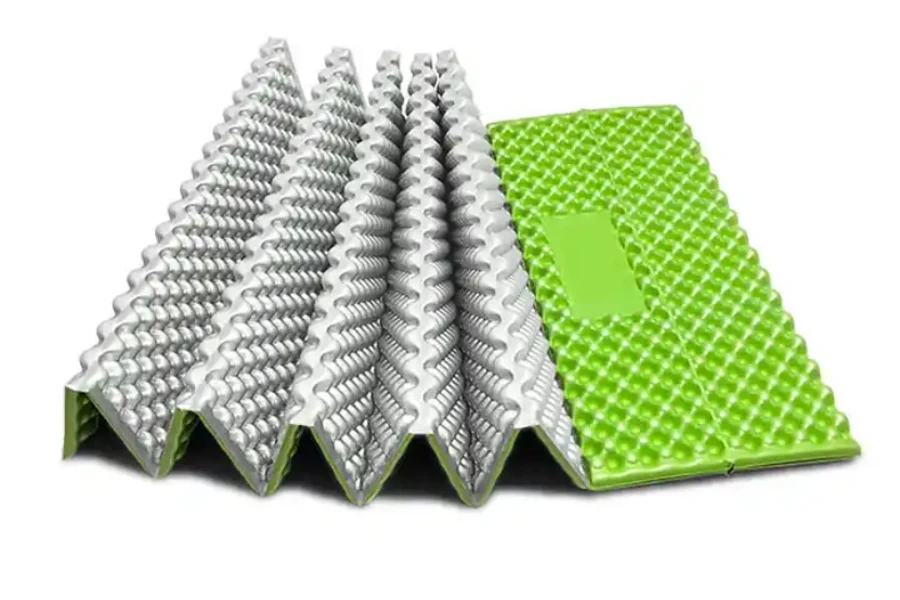
The environmental impact of camping mats is increasingly a consideration for consumers. Eco-friendly options are gaining popularity, with a focus on materials that reduce environmental footprints. For example, mats made from recycled materials or sustainable manufacturing processes are in demand. These eco-friendly mats not only cater to the growing environmental consciousness among campers but also align with global sustainability efforts.
Manufacturers are responding to this demand by introducing eco-friendly camping equipment, including mats made with less harmful materials. The shift towards more sustainable production methods is evident in the market, with an increasing number of products boasting eco-friendly credentials. This trend is not only about reducing the environmental impact but also about meeting the expectations of a consumer base that values sustainability.
In summary, when selecting camping mats, size and portability are key considerations, especially for different camping styles. Ultralight mats are ideal for backpackers, while thicker, self-inflating mats cater to more stationary camping. Additionally, the environmental impact of the mats is an important factor, with a growing preference for eco-friendly options that align with sustainability goals. These considerations ensure that the selected mats meet the functional requirements and environmental values of modern consumers.
Leading camping mat models and their features
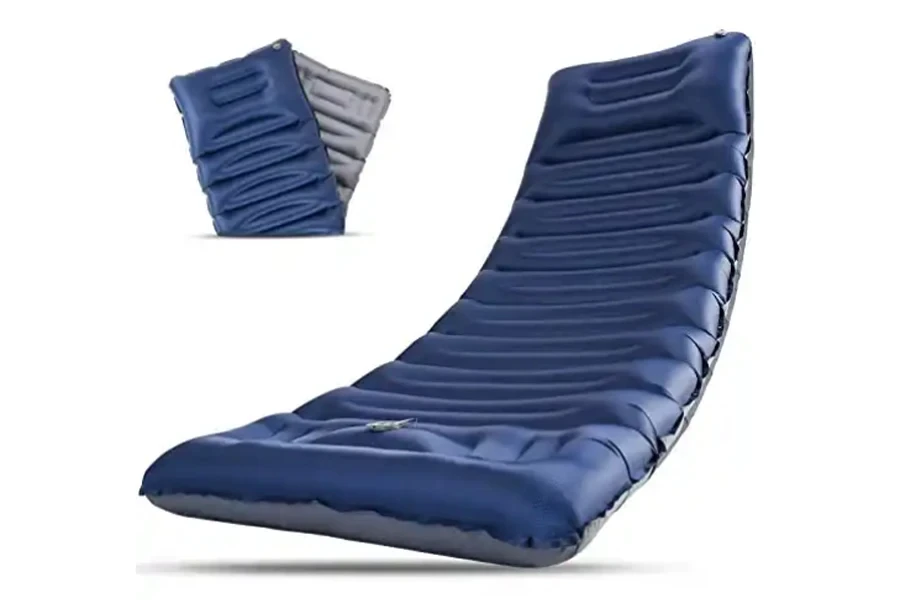
The camping mat market in 2024 features several standout models, each with unique characteristics catering to different camping needs. Among these, the Therm-a-Rest MondoKing 3D, REI Co-op Camp Dreamer XL, and Exped MegaMat 10 are notable for their exceptional features and performance.
Overview of top models in 2024
Therm-a-Rest MondoKing 3D
Features: The Therm-a-Rest MondoKing 3D is a premium camping mat known for its exceptional comfort and insulation. It features a 4.25-inch thick foam layer, providing a plush sleeping experience. The mat boasts an R-value of 7.0, making it suitable for use in various conditions, including cold environments. The StrataCore construction offers a unique combination of a thermal foam core nestled between ridges of air and foam, contributing to its impressive warmth-to-weight ratio. The MondoKing 3D also includes TwinLock valves for easy inflation and deflation, and a stuff sack with a built-in pump for added convenience.
User Experience: Users appreciate the MondoKing 3D for its warm and comfortable sleeping surface. Its easy-to-use inflation system, including the stuff sack that doubles as a pump, is highly regarded. The mat’s large size and vertical sidewalls maximize the usable sleep surface, making it ideal for those who prefer spacious sleeping arrangements. However, its large packed size and higher price point are noted as potential drawbacks.
REI Co-op Camp Dreamer XL
Features: The REI Co-op Camp Dreamer XL is a self-inflating foam pad designed for maximum comfort and convenience. It features a soft stretch-knit top that enhances the sleeping experience. The mat’s thickness and self-inflating design provide excellent insulation and support, making it a great choice for car camping and family trips. The Camp Dreamer XL is also known for its durability and ease of use, with a simple inflation and deflation process.
User Experience: Campers value the Camp Dreamer XL for its comfort and ease of setup. The mat’s thickness offers good back support, and its self-inflating feature is a highlight for users seeking convenience. The mat’s size and weight make it more suitable for car camping rather than backpacking.

Exped MegaMat 10
Features: The Exped MegaMat 10 stands out for its comfort and all-season warmth. It features 3.9 inches of open-cell PU foam, providing a cushioned sleeping surface. With an R-value of 8.1, the MegaMat 10 is well-suited for a range of temperatures, including colder conditions. The mat includes a mini pump for inflation and a deflation valve for quick and easy pack-up. The MegaMat 10’s design focuses on providing a luxurious sleeping experience in the outdoors.
User Experience: Users praise the Exped MegaMat 10 for its exceptional comfort level and insulation properties. The mat’s thickness and firmness are often highlighted as key factors in providing a restful sleep. The inclusion of a mini pump is appreciated for its convenience, though the mat’s larger size when packed is noted as a consideration for storage and transport.
In summary, the Therm-a-Rest MondoKing 3D, REI Co-op Camp Dreamer XL, and Exped MegaMat 10 are leading models in the camping mat market in 2024. Each offers unique features catering to different camping preferences, from luxurious comfort to practicality and ease of use. Their design and construction reflect the evolving needs of outdoor enthusiasts, ensuring a comfortable and restful outdoor sleeping experience.
Comparative analysis of features
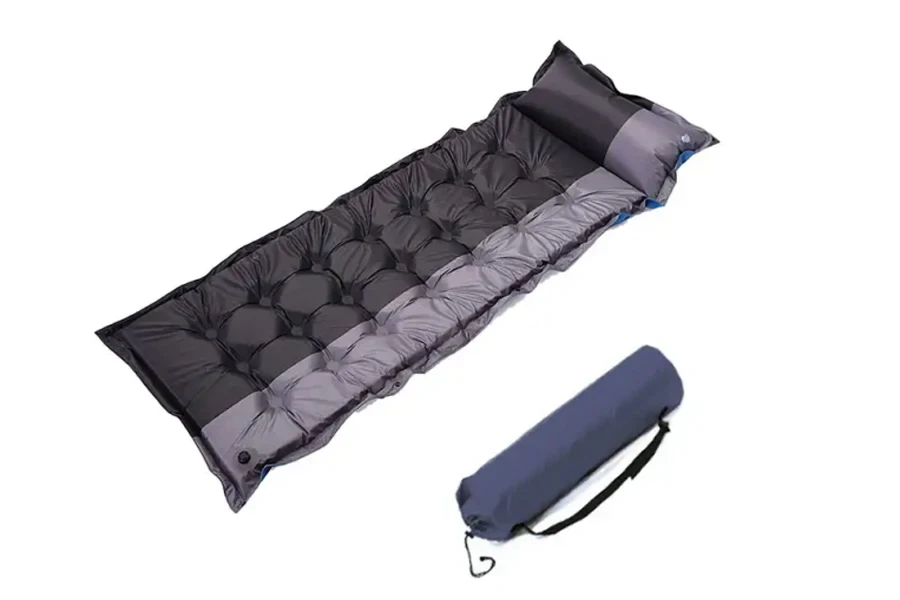
Comfort levels
Therm-a-Rest MondoKing 3D: This model offers a high comfort level with its 4-inch plush foam. It provides a luxurious sleeping experience, making it ideal for those who prioritize comfort in camping.
REI Co-op Camp Dreamer XL: Similar to the MondoKing 3D, the Camp Dreamer XL features a 4-inch thick foam, offering a plush and insulating barrier between the camper and the ground. Its expansive sleeping surface adds to the comfort.
Exped MegaMat 10: The MegaMat 10 is known for its exceptional comfort, often compared to a home mattress. Its 4-inch foam and soft top provide a comfortable feel that doesn’t get sticky or sweaty.
Durability and warranty
Therm-a-Rest MondoKing 3D: This mat is known for its durability, with a robust construction that withstands regular use. It comes with a warranty that assures long-term reliability.
REI Co-op Camp Dreamer XL: The Camp Dreamer XL is also durable, made with high-quality materials. REI offers a comprehensive warranty, ensuring the longevity of the product.
Exped MegaMat 10: Exped is known for its quality construction, and the MegaMat 10 is no exception. It is built to last and comes with a warranty that covers defects in materials and workmanship.
Price points and value for money

Therm-a-Rest MondoKing 3D: Priced at the higher end, the MondoKing 3D offers value for money considering its features, comfort, and durability. It’s an investment for those who frequently camp and seek luxury in the outdoors.
REI Co-op Camp Dreamer XL: This model offers great value for its price. It’s more affordable than the MondoKing 3D but still provides similar comfort and quality, making it a cost-effective option for campers.
Exped MegaMat 10: The MegaMat 10 is also on the higher end in terms of price. However, its unparalleled comfort and durability justify the cost, especially for those who prioritize a bed-like sleeping experience while camping.
In summary, the Therm-a-Rest MondoKing 3D, REI Co-op Camp Dreamer XL, and Exped MegaMat 10 each offer unique advantages in terms of comfort, durability, and value for money. The MondoKing 3D and MegaMat 10 are more expensive but provide superior comfort and are built to last, while the Camp Dreamer XL offers a more budget-friendly option without significant compromises on quality and comfort.
Conclusion
The landscape of camping mats in 2024 presents a sophisticated array of choices, each tailored to enhance outdoor experiences. From the luxurious comfort of the Therm-a-Rest MondoKing 3D to the balanced practicality of the REI Co-op Camp Dreamer XL, and the unparalleled plushness of the Exped MegaMat 10, the selection caters to diverse camping styles and preferences. Key considerations like material durability, comfort, size, portability, and environmental impact play pivotal roles in determining the optimal choice. This nuanced understanding ensures that each selection not only meets functional requirements but also aligns with the evolving preferences of modern outdoor enthusiasts.








